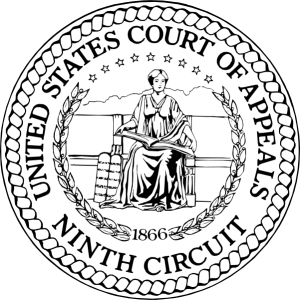 The US. Court of Appeals for the Ninth Circuit recently reversed a district court’s order remanding a class action to state court, holding that a second removal was proper and timely-filed 30 days after the state court entered an order that expanded the class definiton after the first removal.
The US. Court of Appeals for the Ninth Circuit recently reversed a district court’s order remanding a class action to state court, holding that a second removal was proper and timely-filed 30 days after the state court entered an order that expanded the class definiton after the first removal.
A copy of the opinion is available at: http://cdn.ca9.uscourts.gov/datastore/opinions/2015/04/01/15-55176.pdf
The plaintiff, an assistant store manager at a nationwide chain of discount retail stores, filed this action in state court in July of 2012, alleging that the employer supposedly violated the California Labor Code by denying 10-minute rest breaks to its employees.
As you may recall, in order for a federal court to have subject matter jurisdiction under the Class Action Fairness Act, among other things, the amount in controversy must exceed $5 million, exclusive of interest and costs. See 28 U.S.C. § 1332(d).
The defendant employer removed the case in 2012 invoking jurisdiction under CAFA. The plaintiff moved to remand the case to state court, arguing that the defendant improperly went beyond the amended complaint by using a 65 percent violation rate, i.e., that rest breaks were not allowed in 65 percent of the shifts long enough to require a rest period, resulting in an amount in controversy in excess of the $5 million threshold. Instead, the plaintiff argued that the amended complaint was limited to a smaller class, namely, managers working shifts without another manager, and that only one-third of such shifts were worked alone, meaning that the amount in controversy was approximately $2.8 million, well under the jurisdictional minimum.
The district court agreed and remanded the case to state court, finding that because the plaintiff limited the putative class to employees who worked alone, the amount in controversy did not reach the CAFA jurisdictional threshold.
Back in state court, the plaintiff moved to certify the class of assistant store managers who worked without another assistant store manager, according to defendant’s time records without another store manager scheduled to work, and who worked more than 3.5 hours.
The state court, however, expanded the class to include all assistant managers who did not receive breaks, regardless of whether they worked alone.
With this broader class defintion, the defendant employer filed a second notice of removal in June of 2014, arguing that the expanded class certified by the state court meant that at least $5 million was in controversy. The plaintiff again moved to remand the case to state court, which the district court again granted, holding that the second removal was untimely because it was based on the same class definition that had been the subject of the first removal.
On appeal, the issue before the Ninth Circuit was whether the state court’s class certification order created a new opportunity for removal. The Court concluded that it did, and remanded the case to the district court to exercise jurisdiction under CAFA.
In support of its ruling, the Ninth Circuit reasoned that successive removal petitions are permitted only when there has been a relevant change of circumstances, such as when subsequent pleadings or events reveal a new and different basis for removal. The Ninth Circuit held that this includes when the pleadings are amended to create federal subject-matter jurisdiction for the first time.
The Ninth Circuit held that the state court’s order certifying the class expanded the amount in controversy because it included in the class employees who worked shifts without proper rest breaks, not just those who worked alone.
The Court found this to be indistinguishable from an order allowing the pleadings to be amended to alter the class definition, conferring CAFA jurisdiction for the first time. According to the Ninth Circuit, because a successive removal petition is clearly appropriate when the pleadings are amended, the Court found no good reason to reach a different conclusion simply because the same result was obtained through a class certification order.
By certifying a broader class, the Ninth Circuit noted, the state court increased the amount in controversy, effectively amending the complaint. Accordingly, the Ninth Circuit held that the second removal was proper.
Having concluded that the second removal was permissible, the Ninth Circuit found that it was also timely because the removal statute provides for two 30-day windows during which a case can be removed: (1) during the first 30 days after the defendant receives the initial pleading, or (2) during the first 30 days after the defendant receives “an amended pleading, motion, order or other paper from which it may first be ascertained that the case is one which is or has become removable.” 28 U.S.C. § 1446(b).
The Ninth Circuit held that the second window of opportunity to remove (i.e., 30 days after a defendant receives an amended pleading, motion, order or other paper from which it can be ascertained that the case has become removable), was triggered by the state court’s class certification order, not the amended complaint.
Because the defendant employer filed the second removal within 30 days after the class certification order, the Ninth Circuit held that the removal was timely. Accordingly, the Court reversed and remanded the case to the district court, with instructions to exercise jurisdiction over the case under CAFA.


